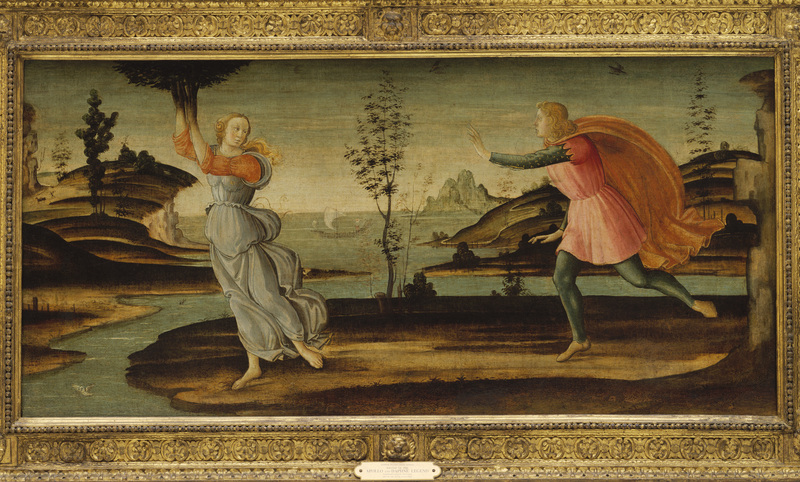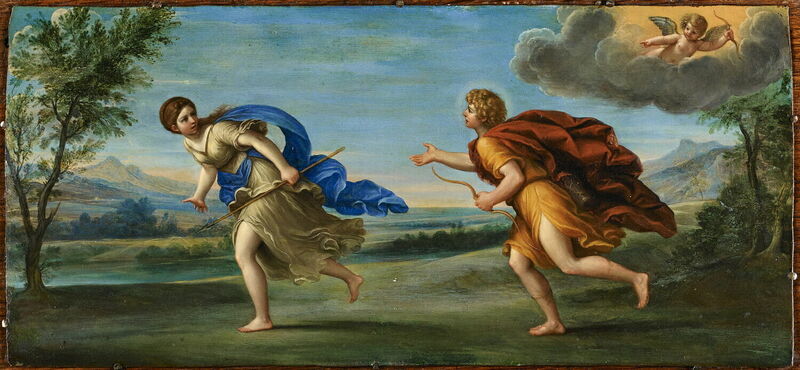Apollo And Daphne
Apollo can be seen with the nymph Daphne. Their story says that Apollo became infatuated with her because Cupid shot him with a love arrow and overcome with desire, he chased her. Daphne, unwilling, transformed permanently into a laurel tree to escape. She, like many other nymphs, had pledged chastity for the goddess Diana, Apollo’s twin. Despite the myth centering around Daphne’s desperation to escape the god, Renaissance artists focused on Apollo’s emotions. Daphne is shown unemotional and mid-transformation, while Apollo chases her desperately in both Daphne Fleeing from Apollo, the Renaissance piece, and Daphne and Apollo, the Baroque work. The transition from Renaissance to Baroque is subtle. Daphne Fleeing from Apollo shows the nymph mid transformation, indicating its connection to humanist style, which emphasized nature and the human form. Comparatively, Daphne and Apollo signals its connection with the Baroque style, where techniques created dramatic color and light. Both paintings show Apollo with much more emotion compared to Daphne, unlike the other gods in the exhibit ,Jupiter or Venus. However, his position within these two periods of history tells the story of a struggle for power, comparable to his counterparts. Apollo may be more powerful in the literal and figurative sense, yet his helplessness to the transformation Daphne undergoes in his grasp demonstrates her power over him.

